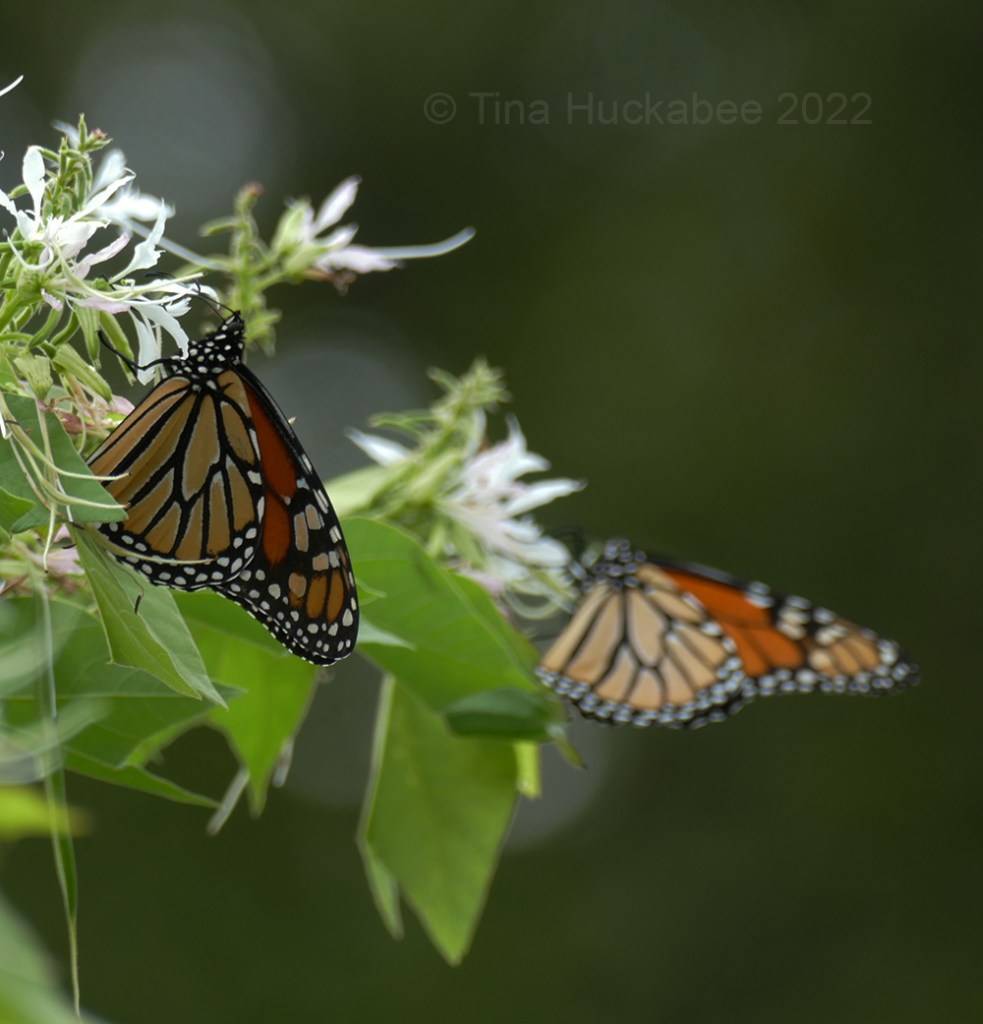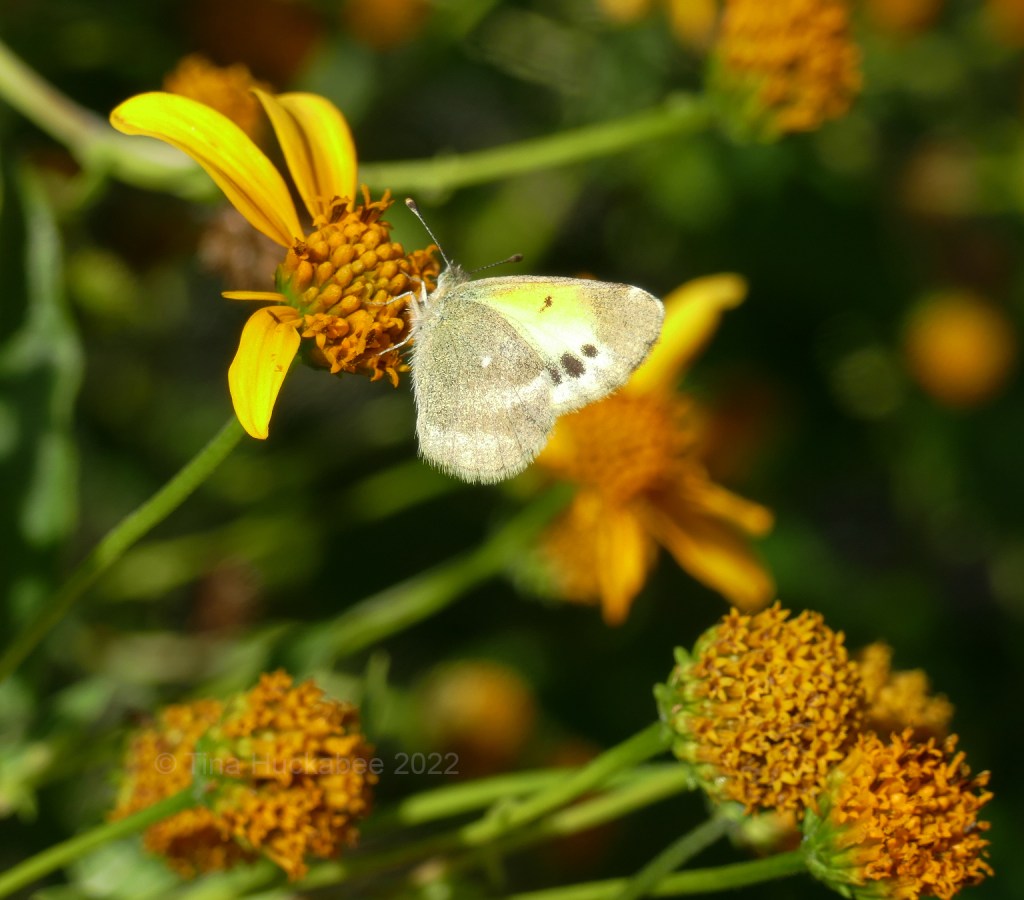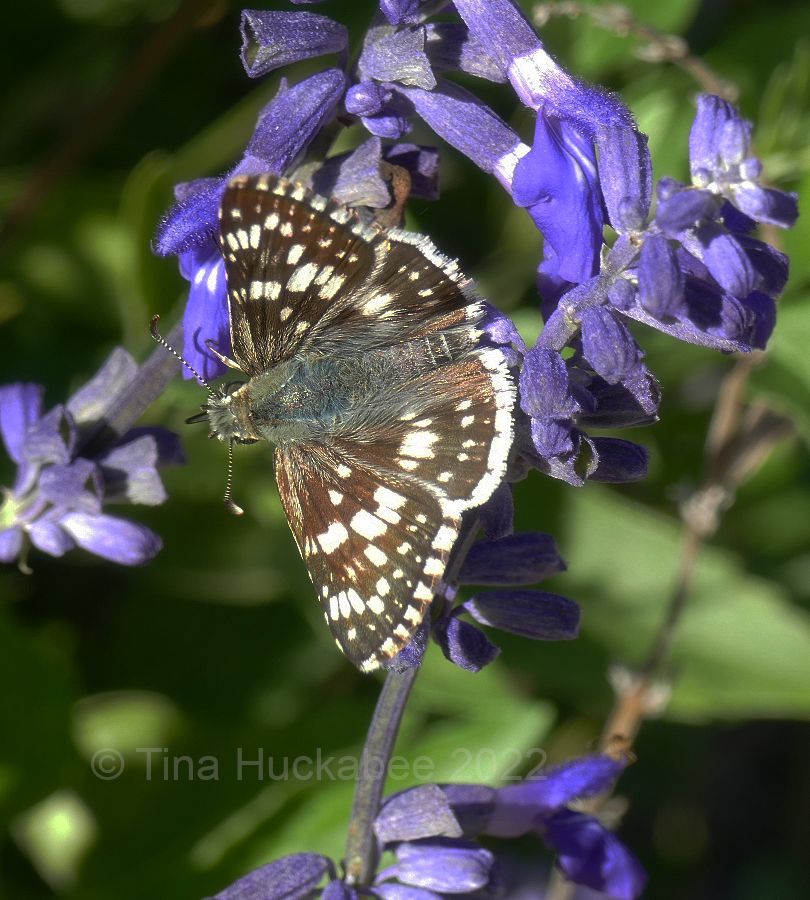Autumn weather has finally arrived. Clouds and rain, with chilly temperatures (upper 30s and 40s), it’s unseasonably cool. I’m not minding it though, as we have more than our share of balmy days. Just before the wet and cool set in, the pollinators were everywhere, all day long: flitting, flying, nectaring and gifting their unique grace to the garden.
The Monarch butterfly migration didn’t nearly match last autumn’s magnificence, but these seasonal visitors drifted through, and for about 6 weeks, there was always some Monarch action in the garden. Once we warm up again, it’s likely I’ll still see a few lingerers, but it’ll be next March before they make their way back through Central Texas from Mexico.

Monarch butterflies are heading to their winter digs in Mexico. Here’s hoping the weather cooperates, whisking them south safely and protecting them in their roosts.

Late summer and autumn bring a number of yellow butterflies in the garden. One of the more common of the numerous yellows are the Southern Dogface, Zerene cesonia. This one enjoys what Mexican Honeysuckle offers.

American Lady, Vanessa virginiensis, are also regulars in Central Texas. This one nectared on the prolific blooms of a Henry Duelberg, Salvia farinacea.

Another familiar autumn butterfly is the American Snout, Libytheana carinenta. These are perhaps not the most beautiful of butterflies, but they’re charming with that extended “snout” as well as their petite form. In some years, they migrate in large numbers, but this autumn, only a few fluttered.

Not outdone by the butterflies, bees are still active, too. One of my favorite native perennials is the Texas Craglily, Echeandia texensis. It’s also favored by a variety of pollinator types, including honeybees.

This isn’t a particularly good photo, but I like how it captured the full-to-bursting corbicula or pollen basket. I like to call honeybees’ corbiculae pollinator pantaloons.

Also buzzing through the garden are a variety of syrphid, or flower flies. This little one is working on its pollinating skills! In fact, there were all kinds of flies around the flowers and they’re excellent pollinators.

A diminutive butterfly that I’m sure I’ve seen in my garden in past seasons, but I know I’ve seen when perusing through insect resources, is this Reakirt’s Blue, Echinargus isola. I enjoyed the flitty antics of several individuals before the rainy period set in.

While attractive enough to the human eye when their wings are up, when open wide, a whole new look emerges. I love the blue in the wings.

One interesting fact about Reakirt’s butterflies is that females lay a single egg on a flower bud and the caterpillar eats the flower, seed pods, and only sometimes, the foliage. Additionally, the caterpillars are accompanied by ants, who slurp up the cats’ “sugary secretions” left behind.
This little cutey was a super fast flyer, but I did nab one or two shots. Called a Dainty Sulpher, Nathalis iole, I’ve seen this specie before in the garden, though had never taken a decent photograph. This dainty lives in a wide range of places, but doesn’t survive cold winters. Host plants include those in the aster family and I grow plenty of them. I didn’t see any obvious eggs or caterpillars, but I plan to keep a keen eye out for them next fall.

Common Checkered-Skipper, Burnsius communis, is a butterfly that lives in most of the continental United States. A large skipper, it’s also a skipper that cooperates with its human admirers–look at that lovely wingspan. These skippers use plants in the mallow family as their hosts and I grow several: Turk’s Caps, Globe Mallow, and Rock Rose. It’s no wonder that these butterflies are in my garden for late summer and fall.

A cousin to the Monarchs, the Queen Butterfly, Danaus gilippus, rivals in beauty! This handsome male nectars on the bloom of a Gregg’s Mistflower, Conoclinium greggii

And this one? It’s all about the almost-spent-blooms of a Plateau Goldeneye, Viguiera dentata. Queens don’t migrate like the Monarchs, so I’m likely to see them in summer.

It really has been a glorious October and November and I fully expect that once the chill passes and before our first freeze, some of that glory will return. Central Texas enjoys a long growing season and therefore, a long pollinator season. Some pollinators have gone to rest, like many of the native bees, but others will over-winter and be active during our sunny days. They’re welcome anytime!

Wonderful! Really enjoyed seeing all your different butterflies.
LikeLike
Thanks, Brian–so did I!
LikeLike
So many lovely butterflies! Habitat loss is really impacting numbers of both insects and birds. Your area has seen quite a lot of development in the past decade, true? Glad your garden still offers a refuge!
LikeLike
Oh yes, lots of green space is being destroyed here. It’s sad because it’s an area of great diversity in flora and fauna. But you’re right, my garden and many others are refuges. There just needs to be land conserved.
LikeLiked by 1 person
I am in awe of your beautiful, crisp and clear photographs! It has been cold and wet here in Montgomery County and your photos are bringing me back to those lovely last days of October.
LikeLike
Oh, thank you so much! That’s really special, because I always love looking at your photos! You know how it is: many shots, a couple of them a good.
We’re also cold and wet, but I’m enjoying it after our scorcher of a summer.
LikeLiked by 1 person
You’ve got a good butterfly assortment here. And now I know the word corbicula, which evolved to French corbeille.
LikeLike
Yes, it’s been a great few months for the butterflies, though not so much in this past week. I wonder what the French word for ‘pollen pantaloons’ is?
LikeLike
A literal translation wouldn’t be much different: pantalons de (or en) pollen.
LikeLike
There has been a nice variety of butterflies around recently. I’ve seen more Gulf Fritillaries than any other species, but I’ve found a couple that I’d never seen before. One I still haven’t come across is the Dainty Sulphur. I saw quite a few Southern Dogface this year, but always on Turk’s Cap. Do they visit yours, too? I smiled at the Snout. I’ve only seen that species once, at Lost Maples. I think they’re wonderfully ugly-cute.
LikeLike
Funnily enough, I haven’t had that many Gulf Fritillaries this year, even though I have a couple of passion vines. There were some–the caterpillars certainly ate the vine to its skeleton–just not as many. Yes, I often see the Dogface on my Turk’s Cap. I had some shots of one, but they weren’t ideal for this post. Like you, I think the Snout is so ugly it’s cute!
LikeLiked by 1 person
You have a nice selection of butterflies. I thought about photographing the ones in my garden, but that’s as far as I got.
LikeLike
Yeah, that’s all I do, too. I don’t do much with my camera outside my garden, except for vacation photos.
LikeLiked by 1 person
I try to always stop and admire every butterfly I see out in the garden, never take them for granted. But to see a season’s worth all lined up, properly identified (along with the plants they prefer) is such a treat. Your blog is going on my list of things I am grateful for this upcoming Thanksgiving. Thank you for sharing the beauty of your spaces and visitors!
LikeLike
And you are on my ‘I’m grateful’ for your friendship, Deb! Thank you for the work you and your family are doing on your property. You’re bringing Texas nature home!
LikeLiked by 1 person
So many beautiful butterflies! It’s been unseasonally warm up here, but finally cooled off a little last week. Still waiting for the rain, though. We had a little, but not nearly enough.
LikeLike
I hope y’all get some good rain and soon. I’m very grateful for our wet and chilly spell, we have enough sunshine and dry!
LikeLiked by 1 person
Oh wow! It’s so neat to see that Queen. I’ve never seen one, that I can recall.
LikeLike
They’re a pretty thing in the garden, to be sure!
LikeLiked by 1 person
Wonderful butterflies. Do any of your visitors beside the Monarch migrate? Lucky you to live where the season for pollinators and their pollinatees is so long. Butterfly migration is an amazing thing…so small yet filled with so much energy. I don’t think there is a human equivalent.
LikeLike
Yes, welcome anytime. I envy your long season with pollinators. I miss them from November through February. Great photos!
LikeLike